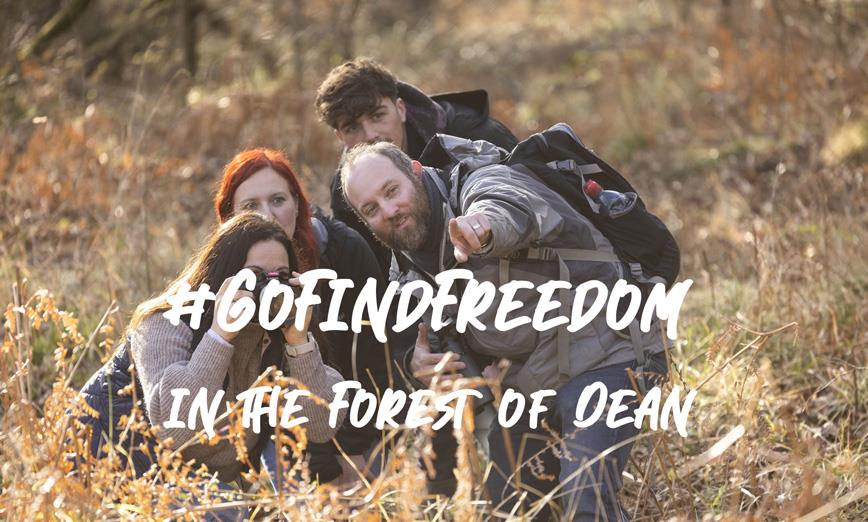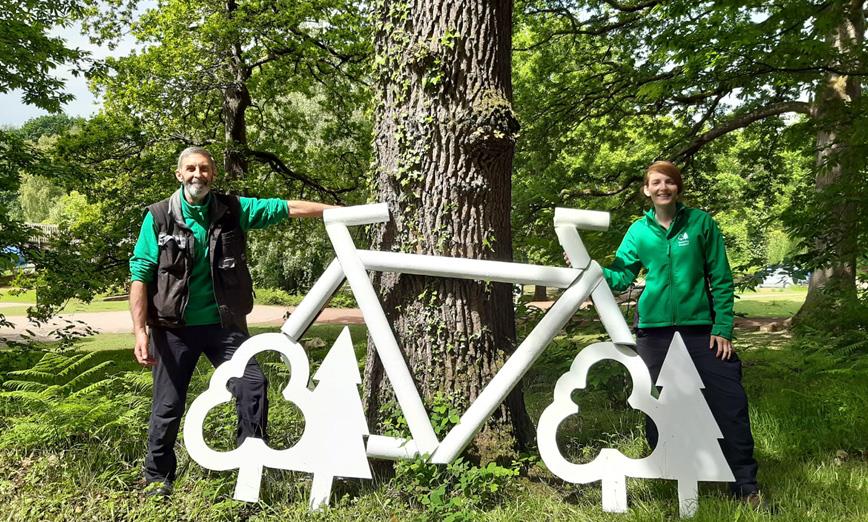- Stay
- What's On
- Things To Do
- Food & Drink
- Explore
- Inspiration
- Offers
- Weddings
- Blog
My Planner
- Stay
- What's On
- Things To Do
- Food & Drink
- Explore
- Inspiration
- Offers
- Weddings
- Blog
You are here: Explore > History & Heritage > Forest of Dean
From the time of the Norman conquest in 1066 until 1971 the Dean was a Royal Forest. It was used by the Normans as their personal hunting ground and kept stocked with deer and wild boar. In addition the crown had the exclusive rights to timber and to the minerals.
The Hundred of St Briavels was established in the 12th century, at the same time as many Norman laws concerning the Forest of Dean were put in place. St Briavels Castle became the Forest's administrative and judicial centre. Verderers were appointed to act for the king and protect his royal rights, and local people were given some common rights. Flaxley Abbey was built and given rights and privileges. In the 14th century Edward I established the rights of freeminers.
The Forest was used exclusively as a royal hunting ground by the Tudor kings, and subsequently a source of food for the royal court. Its rich deposits of iron ore led to it becoming a major source of iron. Timber was particularly fine and was regarded as the best source for building ships.
The Speech House, between Coleford and Cinderford, was built in 1682 to host the Court of Mine Law and "Court of the Speech", a sort of parliament for the Verderers and freeminers managing the forest, game, and mineral resources. The Speech House is still owned by the crown and leased as a hotel. The Verderers' Court, one of the oldest courts in England, still meets in The Speech House four times a year. Verderers are still appointed by the crown but today their role is largely to liase between Forestry England and the local community.
During the 18th century, squatters established roughly-built hamlets around the fringes of the Crown forest demesne. By about 1800, these settlements were well established at Berry Hill and Parkend.
Although no longer a royal forest, the Dean is still largely in public ownership and is managed by Forestry England.
The Forest Miscellany website contains many interesting sections, excerpts and collections. Find it here.
The Foresters' Forest Landscape Partnership
The Forest of Dean is much loved and cherished by Foresters and the local community, but this importance was not well promoted locally nor its historic roots and heritage fully valued. All this was the driving force behind the Foresters’ Forest programme which received funding from the National Lottery Heritage Fund in 2017 being awarded a grant of £2.5m to deliver 38 different community based projects across the Forest of Dean.
Working with lead partner Forestry England and 31 other local partner organisations and volunteers, Foresters’ Forest is a broad alliance of local organisations and individuals who have a common passion for the cultural, natural and built heritage of the Forest of Dean. Together they are uncovering, revealing, sharing and celebrating the Forest’s natural, built and cultural heritage.
Projects include the Hidden Heritage Apps and Walking with Wheels. There is also a map of their heritage projects here and a timeline covering the Cultural Heritage, Natural Heritage, Built Heritage, and National History of the Forest of Dean here. For more information see here.
Find Out More About the History of the Forest of Dean
Find Your Freedom
- Mining definitely left its mark on the Forest of Dean. You can learn about the history of mining at Hopewell Colliery and Clearwell Caves and there are several sculptures and memorials which are important reminders of a legacy which shaped the landscape and the people in it.
- Discover the myths and legends of the Forest of Dean from the age old question of ‘who killed the bears?’ to the mysterious bleeding stone.
- Explore the Forest of Dean's Hidden Heritage in a series of apps, an exciting new way to explore the Forest of Dean using modern technology to bring historic areas to life. Using them is like taking a step back in time, showing you the Forest’s industrial past in a series of magical Then and Now images.
- The Forest of Dean has a rich heritage and its towns are characterful and vibrant bases for exploring.
- Freeminer is an ancient title given to coal or iron miners in the Forest of Dean. The freemining tradition is unique to the Forest. For hundreds of years, mining of the Forest of Dean coalfield and iron reserves has been regulated through a system of Freemining, with the Freeminer's Mine Law Court sitting at the Speech House from 1682.
- Some of the fascinating facts, myths, legends and tales about the Forest of Dean and Wye Valley.
- Discover the wonder of under! The ancient mines at Clearwell Caves are a secret world hidden beneath the trees; they are an exciting underground experience for the whole family, an unfathomable natural cave system that has been mined for more than 4,500 years. Cafe, shop, picnic area, free parking. Deep level adventure caving available.
- We are the Museum of the Forest: a stunning building and location with inside and outside attractions. Learn about the history of the Forest from the Ice Age to the present day, visit our museum and gallery, explore the Gruffalo woodland trail, visit a charcoal burner's camp, see chainsaw carving, our mill pond and pretty stream, kids will enjoy our woodland playground plus there is an excellent cafe and gift shop.
- This working colliery is an unmissable experience set in the midst of the glorious Forest of Dean. Mined since the 1800s, the colliery gives you a unique opportunity to learn about the ancient and fascinating tradition of freemining in the safe hands of an expert freeminer. Sink below the Forest floor for a unique adventure and take the 45-minute tour through the dark tunnels before emerging back into serene woodland. Follow it with a hot drink and bite to eat at the friendly Hopewell Cafe.
- The Speech House is a former historic hunting lodge located in the centre of the Royal Forest of Dean. With 35 en-suite bedrooms, a cosy bar, pretty garden with heated dining dens, and two restaurants serving morning coffee, lunches, afternoon tea, bar meals and fine-dining. Car park with EV charging points. Dog friendly.
- 1 Jan 000131 Dec 9999
- 1 Jan 000131 Dec 9999
- The Forest of Dean is easily accessible from many major cities and areas of the UK. We’d like to invite you to make a date to come and experience all that the Forest of Dean has to offer.
- Formerly the site of the New Fancy coal mine, the old spoil heap now provides spectacular views across the Forest. Great for birdwatching and for woodland walks. Easy access to Mallards Pike and Speech House Woods.
©Visit Dean Wye 2025. All Rights Reserved.
*Visit Dean Wye is the trading name of Forest of Dean & Wye Valley Tourism Limited.









